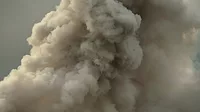Camp Peary restoration project to remove toxins
YORK – Jan. 2 – (Virginia Gazette) -- Sixty years after Navy Seabees inadvertently created a toxic dump by burning debris at Camp Peary, the site is getting a good scrubbing.
A $6.7 million environmental restoration enters Phase 2 this month at the top secret CIA training base. Residents of Queens Lake can see a clearing of trees along Queens Creek where the work is proceeding.
Soil at the site has tested positive for thallium, arsenic and lead, all of which can be deadly. There’s no word of how concentrated or pervasive the toxins are. A memo from an environmental consultant company overseeing the cleanup refers to them only as “contaminants of concern.”
Camp Peary and the Navy have joined forces to rid the toxins at the landfill of Porto Bello, the community that was displaced for World War II. Although the toxic dumping took place in the 1940s, the site was not identified as possibly contaminated until 1985. Testing eventually confirmed metal contamination in the soil and sediment.
The discovery was made public last February as part of an environmental remediation project.
Robert Pike is the Garrett-Robb-Guy Professor of Chemistry at the College of William & Mary. As an inorganic chemist, he studies metals that include arsenic, thallium and lead.
“Those are metals to be concerned about,” he said of what was found at Camp Peary. “Their access to water that might be drinking water is a concern.” The worry isn’t the creek, but any groundwater aquifers that feed wells.
Quantifying the contamination is key.
“If it’s parts-per-million, that’s significant contamination,” Pike said. “If it’s parts-per-billion, that’s still significant but less of a concern.” No one has revealed the levels found.
The variety of metals is also important.
“There are a lot of different forms of those particular metals,” Pike said. “The speciation of the material will influence its mobility. The more free ions a metal has the more soluble it is. If it has more oxidation it will be less soluble.”
Depending on what varieties of lead, arsenic and thallium are in the soil and sediment, Queens Creek could be risky for fish, wildlife and swimmers.
But groundwater is the bigger risk.
“Toxic ions in the soil are not as direct a threat as they are in a solution in water,” Pike explained. “Potential access to a reservoir or groundwater or rain runoff that could eventually get into streams could be a serious issue.”
Back on land, the danger is not as severe.
“People don’t generally go around eating dirt, so if it’s sequestered in the dirt that’s not as serious of an issue,” he said.
Navy public affairs officer Kelley Stirling said in an interview that the contamination does not pose a danger to those who fish or boat along the Queens Creek.
“Extensive sampling has shown that the Porto Bello disposal area has not adversely impacted Queens Creek,” Stirling said. “There are isolated areas within the wetlands immediately adjacent to Camp Peary that show elevated metals levels, so they will be removed as part of the Phase 2 cleanup action.”
The project is being monitored by the Virginia Department of Environmental Quality and the Army Corps of Engineers. Although the Navy is not required to get permits from the Virginia Marine Resources Commission or the York County Wetlands Board, both agencies have been consulted.
The Porto Bello cleanup is part of a multi-million dollar environmental restoration program at Camp Peary. Eight sites have already been cleaned up as part of the program.
According to a report from consultant Solstice Environmental, various debris from Seabee training activities was burned twice a year from 1942 to 1946 within the 12-acre site at the Porto Bello landfill.
Phase 1 began in July. Fully 35,000 cubic yards of soil are expected to be removed from the site as part of Phase 1. To help with the soil removal, numerous trees at the landfill have been removed to allow for better excavation of contaminated soil. Some of the clearing can be seen from New Quarter Park, just across Queens Creek from the site.
Phase 2 will focus on 43,000 square feet of tidal wetlands. Around two feet of surface wetland sediments have to be removed.
Phase 2 will also affect 7,000 square feet of “palustrine” forested wetlands.
Some upland tree clearing will be required to allow for the creation of hauling roads to get equipment into the wetlands. Stirling said new trees and wetlands vegetation will be planted and the hauling roads removed after Phase 2 is completed.
“Site restoration will include the creation of additional freshwater and tidal wetland habitats,” she said. “Camp Peary will be monitoring the success of the plantings through the 2009 and 2010 growing seasons to ensure that vegetation is established.”
The environmental report said that the Navy is hoping to create a new 5- to 10-foot tidal wetland area across the entire wetland site.
Phase 2 is expected to be finished by June.
A $6.7 million environmental restoration enters Phase 2 this month at the top secret CIA training base. Residents of Queens Lake can see a clearing of trees along Queens Creek where the work is proceeding.
Soil at the site has tested positive for thallium, arsenic and lead, all of which can be deadly. There’s no word of how concentrated or pervasive the toxins are. A memo from an environmental consultant company overseeing the cleanup refers to them only as “contaminants of concern.”
Camp Peary and the Navy have joined forces to rid the toxins at the landfill of Porto Bello, the community that was displaced for World War II. Although the toxic dumping took place in the 1940s, the site was not identified as possibly contaminated until 1985. Testing eventually confirmed metal contamination in the soil and sediment.
The discovery was made public last February as part of an environmental remediation project.
Robert Pike is the Garrett-Robb-Guy Professor of Chemistry at the College of William & Mary. As an inorganic chemist, he studies metals that include arsenic, thallium and lead.
“Those are metals to be concerned about,” he said of what was found at Camp Peary. “Their access to water that might be drinking water is a concern.” The worry isn’t the creek, but any groundwater aquifers that feed wells.
Quantifying the contamination is key.
“If it’s parts-per-million, that’s significant contamination,” Pike said. “If it’s parts-per-billion, that’s still significant but less of a concern.” No one has revealed the levels found.
The variety of metals is also important.
“There are a lot of different forms of those particular metals,” Pike said. “The speciation of the material will influence its mobility. The more free ions a metal has the more soluble it is. If it has more oxidation it will be less soluble.”
Depending on what varieties of lead, arsenic and thallium are in the soil and sediment, Queens Creek could be risky for fish, wildlife and swimmers.
But groundwater is the bigger risk.
“Toxic ions in the soil are not as direct a threat as they are in a solution in water,” Pike explained. “Potential access to a reservoir or groundwater or rain runoff that could eventually get into streams could be a serious issue.”
Back on land, the danger is not as severe.
“People don’t generally go around eating dirt, so if it’s sequestered in the dirt that’s not as serious of an issue,” he said.
Navy public affairs officer Kelley Stirling said in an interview that the contamination does not pose a danger to those who fish or boat along the Queens Creek.
“Extensive sampling has shown that the Porto Bello disposal area has not adversely impacted Queens Creek,” Stirling said. “There are isolated areas within the wetlands immediately adjacent to Camp Peary that show elevated metals levels, so they will be removed as part of the Phase 2 cleanup action.”
The project is being monitored by the Virginia Department of Environmental Quality and the Army Corps of Engineers. Although the Navy is not required to get permits from the Virginia Marine Resources Commission or the York County Wetlands Board, both agencies have been consulted.
The Porto Bello cleanup is part of a multi-million dollar environmental restoration program at Camp Peary. Eight sites have already been cleaned up as part of the program.
According to a report from consultant Solstice Environmental, various debris from Seabee training activities was burned twice a year from 1942 to 1946 within the 12-acre site at the Porto Bello landfill.
Phase 1 began in July. Fully 35,000 cubic yards of soil are expected to be removed from the site as part of Phase 1. To help with the soil removal, numerous trees at the landfill have been removed to allow for better excavation of contaminated soil. Some of the clearing can be seen from New Quarter Park, just across Queens Creek from the site.
Phase 2 will focus on 43,000 square feet of tidal wetlands. Around two feet of surface wetland sediments have to be removed.
Phase 2 will also affect 7,000 square feet of “palustrine” forested wetlands.
Some upland tree clearing will be required to allow for the creation of hauling roads to get equipment into the wetlands. Stirling said new trees and wetlands vegetation will be planted and the hauling roads removed after Phase 2 is completed.
“Site restoration will include the creation of additional freshwater and tidal wetland habitats,” she said. “Camp Peary will be monitoring the success of the plantings through the 2009 and 2010 growing seasons to ensure that vegetation is established.”
The environmental report said that the Navy is hoping to create a new 5- to 10-foot tidal wetland area across the entire wetland site.
Phase 2 is expected to be finished by June.
Looking for a reprint of this article?
From high-res PDFs to custom plaques, order your copy today!



.webp?height=200&t=1712776413&width=200)


